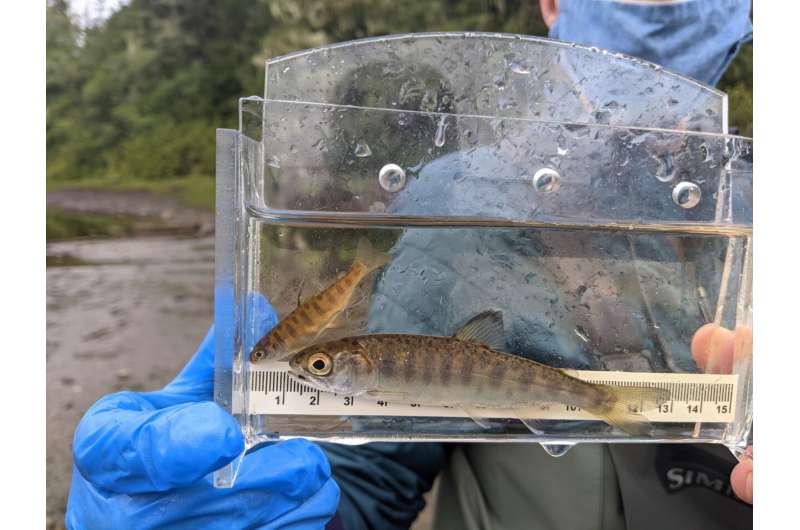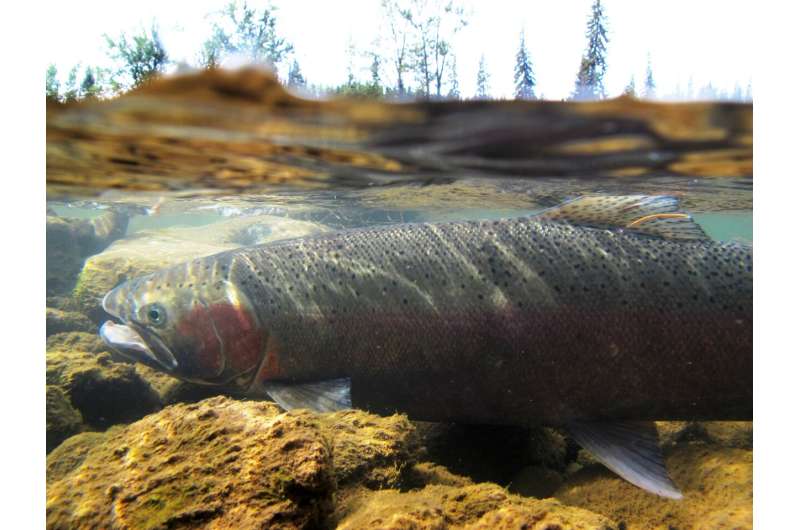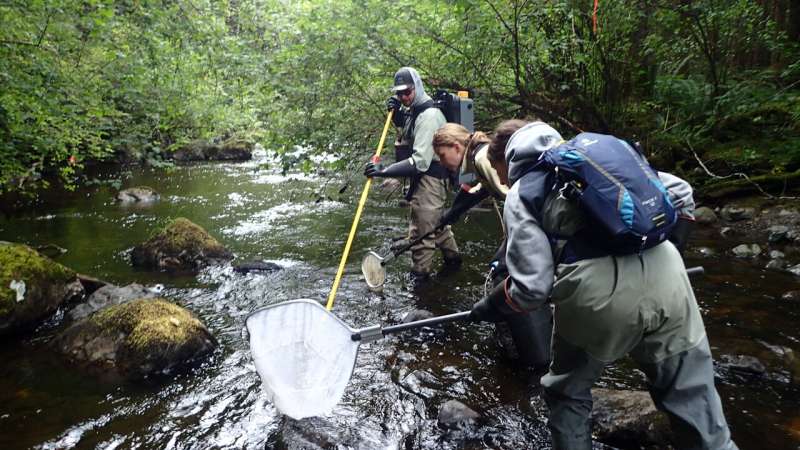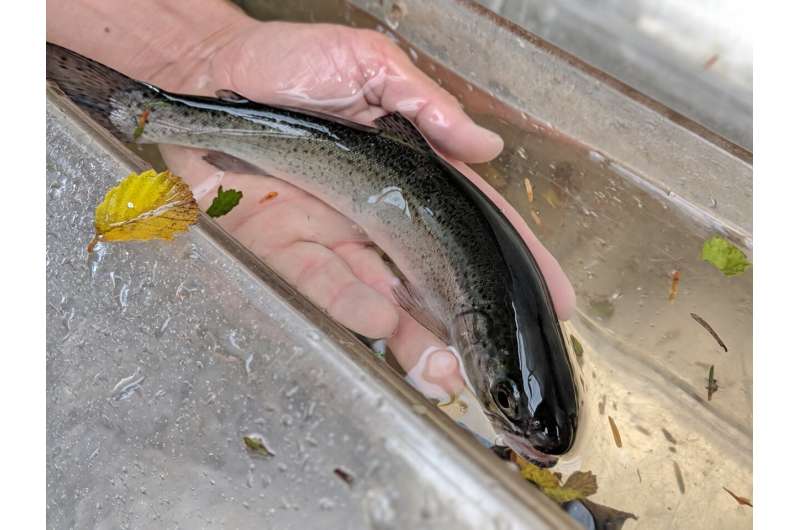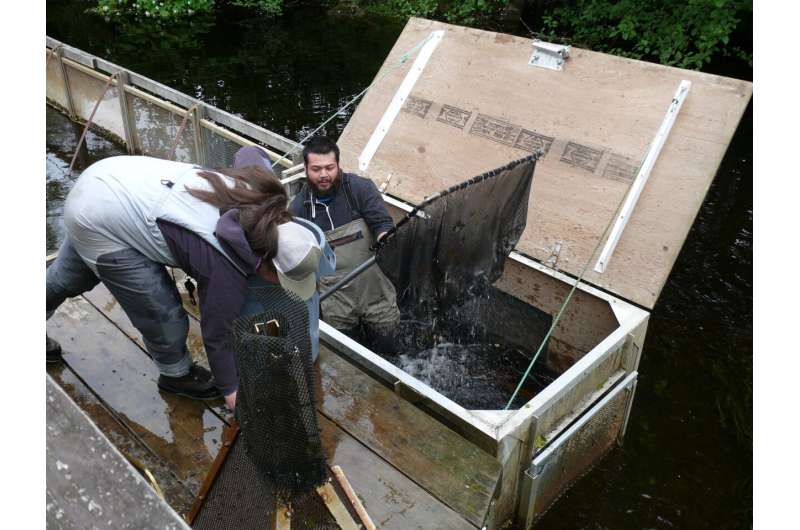Coho smolt. Credit: Julian Gan
Researchers from Simon Fraser University's Salmon Watershed Lab have found that recent declines of Pacific salmon and trout are associated with 40 years of changes in their combined marine and freshwater ecosystems.
Led by lab researcher Kyle Wilson, the study found that stressors in both environments combine to impact fish resiliency. "It's not just the ocean that is driving declines," says Wilson, a former SFU Banting postdoctoral fellow. "The combination of marine and freshwater stressors effectively 'squeezes' some salmon populations by lowering survival in both the river and the sea."
The study, published today in the journal Global Change Biology, traces declining numbers in five salmon species found in the Keogh River near Port Hardy on Vancouver Island.
The declines were found to coincide with combinations of stressful environmental changes including fluctuating ocean climate, increases in coastal seals and other competing salmon, warmer water temperatures, and increased watershed logging.
Lower juvenile salmon survival in rivers, impacted by watershed logging, occurred together with reduced survival of adult salmon due to increased risks from predatory seals and competition with other salmon, both wild and from hatcheries.
Morice Steelhead. Credit: Jonathan Moore
The declines were largest for steelhead and coastal cutthroat trout (80 per cent and 70 per cent among adults between 1976 and 2015), which spend more of their life in rivers.
While salmon populations across the Pacific Northwest have declined in recent years, Wilson says a clear understanding of the environmental factors influencing these declines is not well understood. "Some research attributes the decline to worsening ocean conditions while others point to climate change or overfishing," he says. "There has even been great uncertainty about which is more responsible, freshwater or marine processes, for salmon and steelhead declines."
These analyses were possible because the river system is one of only a handful of places in BC where young salmon migrating to sea, as well as adult salmon, are counted consistently and carefully, over many decades.
-
Keogh e-fishing sampling 2020. Credit: Sean Naman
-
Keogh Steelhead. Credit: Kyle Wilson
-
Keogh sampling. Credit: Colin Bailey
"This study showcases the power and importance of careful monitoring of both adult and juvenile life-stages of salmon and steelhead in order to understand what parts of their life-cycles are driving overall population change," says project collaborator and SFU biology professor Jonathan Moore.
Wilson says the study findings can help inform policies such as the federal government's recent Pacific Salmon Strategy Initiative (PSSI) which will allocate $647.1 million to a wide variety of conservation and scientific efforts to help recover salmon.
More information: Kyle L. Wilson et al, Marine and freshwater regime changes impact a community of migratory Pacific salmonids in decline, Global Change Biology (2021). DOI: 10.1111/gcb.15895
Journal information: Global Change Biology
Provided by Simon Fraser University
